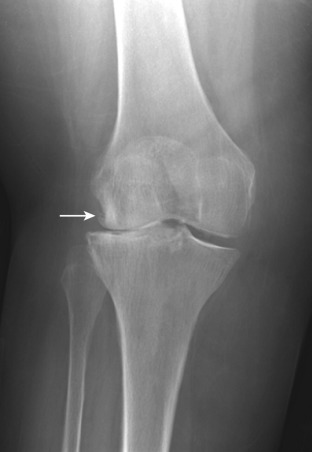Physical Address
304 North Cardinal St.
Dorchester Center, MA 02124
Joints can be categorized based upon their structure and function. Fibrous joints such as the skull sutures (synarthrosis) demonstrate minimal to no mobility. Cartilaginous joints such as the intervertebral discs (amphiarthrosis) are slightly more mobile. Synovial joints (diarthrosis) are freely mobile.
Conventional radiography is the mainstay for the initial workup of patients with various arthritides. It is a relatively inexpensive imaging technique that allows the radiologist to detect the presence of and characterize the type of arthritis based upon the pattern of observed changes that involve the bones, joints, and soft tissues. However, the pathologic changes that occur early in the disease process may be occult on radiographs, particularly when involving the soft tissue structures. For this reason, magnetic resonance imaging (MRI) is useful to evaluate early changes such as joint effusions, synovitis, cartilage abnormalities, bone marrow edema, osseous erosions, and tendon and ligament abnormalities. Ultrasonography (US) is an imaging technique that may be used to evaluate patients with arthritis. While it is less expensive than MRI, it is operator dependent. Bony erosions that may be occult on radiographs can be visible on gray scale US. US is also useful to evaluate for presence of associated tendon and ligament abnormalities, intraarticular bodies, joint effusions, and extraarticular fluid collections. Color Doppler US is useful to demonstrate synovial hyperemia, which is common in the inflammatory arthropathies. 18 F-fluorodeoxyglucose (FDG) positron emission tomography (PET) is also useful to reveal increased metabolic activity in sites of active arthritis, but it is only currently utilized for research purposes.
A common technique of radiographic interpretation includes evaluation of the “ABCDs” of arthritis.
A lignment of joints is assessed, including presence of subluxations and dislocations.
B ones are carefully assessed for changes in mineralization, presence of erosions, and presence of new bone production (subchondral sclerosis, osteophytes, periostitis).
C artilage is indirectly evaluated on radiographs. Joint space narrowing and subchondral bony changes imply presence of cartilage disease.
D istribution (proximal vs. distal, symmetry, involvement of specific joints, regions affected within a joint) of the disease process is assessed to better characterize the specific underlying disease process.
S oft tissues are evaluated for presence and pattern of swelling and for presence of calcifications.
Osteophyte formation, subchondral sclerosis, and joint space narrowing are the characteristic features of OA, also known as degenerative joint disease (DJD) ( Figure 49-1 ). OA most commonly affects the distal interphalangeal (DIP) and proximal interphalangeal (PIP) joints of the hands and the major weight-bearing (hip and knee) joints. In addition, the carpal joints at the base of the thumb are commonly affected. Any joint that is damaged by trauma resulting in an irregular articular surface can prematurely be affected by OA as well.

OA is generally secondary to articular cartilage damage from repetitive microtrauma throughout life, whereas RA is an inflammatory arthritis in which inflamed synovium produces erosive changes of the adjacent bones and cartilage. Joint space narrowing in osteoarthritis is usually asymmetric, whereas joint space narrowing in RA is classically symmetric. For example, joint space narrowing tends to occur more superiorly in the hip joint in OA, whereas a more axial (i.e., concentric) distribution of joint space involvement is observed with RA. Subchondral sclerosis and osteophyte formation are reparative responses seen in OA due to chronic wear and tear. These are characteristically absent in RA.
Become a Clinical Tree membership for Full access and enjoy Unlimited articles
If you are a member. Log in here